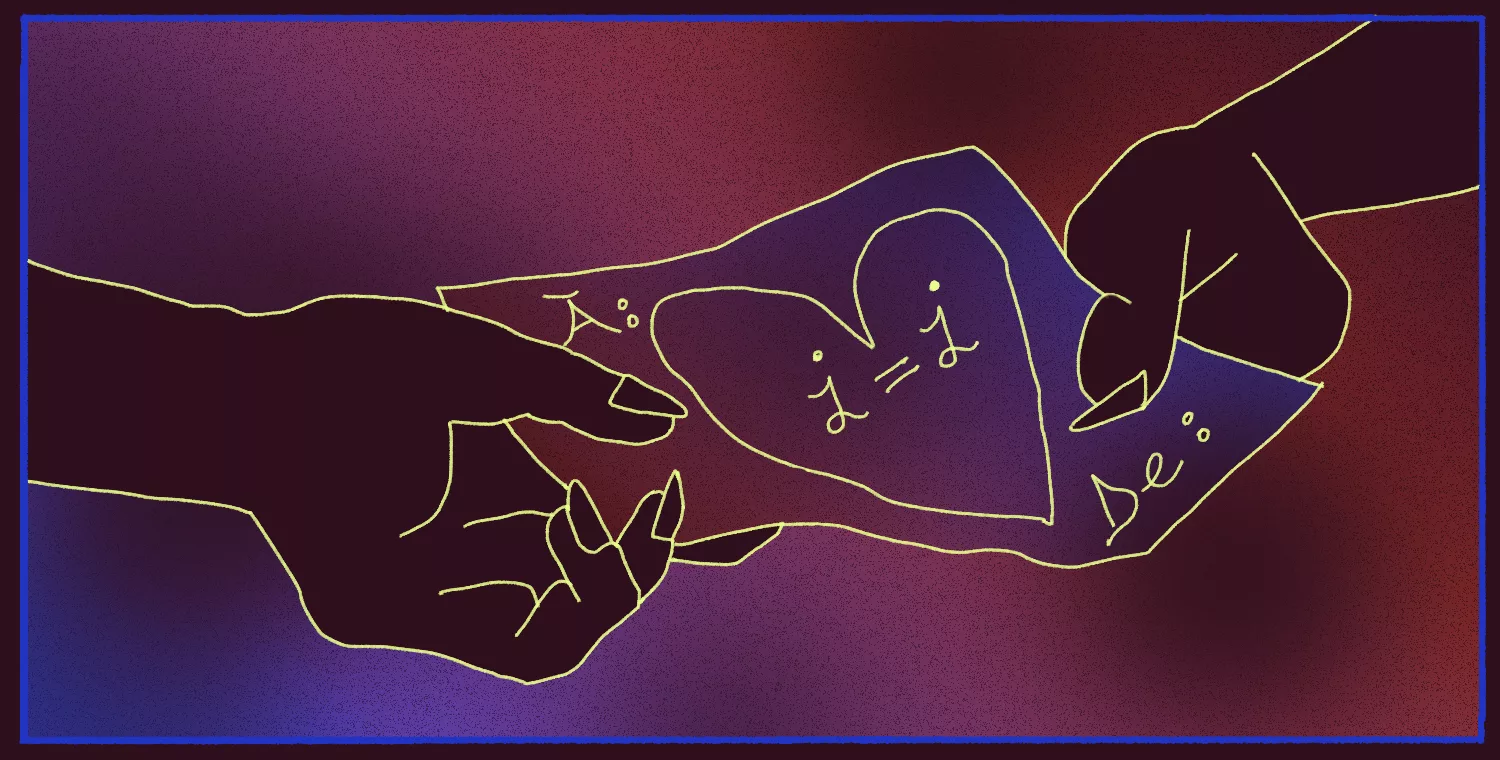Your cart is currently empty!

Dormant Desire: Understanding and Managing Sexual Desire Discrepancies in Relationships
“How long has it been since we’ve had sex? A week? Nine days? I hope she doesn’t think I’m not attracted to her anymore… It’s just that sex is the furthest thing from my mind right now. I’m way more in the mood to just chill together and cuddle in front of the TV. But… if we don’t have sex soon, will she think there’s a problem in our relationship? Crap. Maybe it’s better to initiate sex than to risk having that happen. I guess we’re “due” anyway, and she’d probably be happy and reassured.”
“It’s been over a week since we last did it. If it continues on like this, he’ll start to think that I don’t love him anymore! But I’m not really in the mood. Right now, I’d be totally satisfied with cuddling and watching Friends together. But, just in case, I won’t turn him down the next time he initiates. Better safe than sorry.”
Sound familiar? Many of us have the expectation that we “should” or “must” have sex regularly, even several times a week, if we want to maintain a healthy relationship. However, this can lead many people to say “yes” to their partner when they don’t really want to.
How many people bone without being in the mood?
According to some researchers, almost half of young women and between one-fourth and one-third of young men (O’Sullivan & Allgeier, 1998; Sprecher et al., 1994) have consented to sex without feeling sexual desire, even in the absence of violence and coercion from their partner. In some cases, the person who isn’t in the mood will be the one to initiate!
For example, a Canadian study conducted among young straight people between18 and 24 years old found that, for both women and men, nearly one in six sexual encounters occurred without desire and that most of these were initiated by men (Vannier & O’Sullivan, 2010).
Taken together, these findings suggest that we’re having lots of maintenance sex and that, in addition to women agreeing to it when they’re not totally interested, this maintenance sex is often initiated by men who aren’t in the mood either.
Sex without desire: A good or bad idea?
We often hear that we should never have sex when we’re not in the mood or that sexual desire is absolutely necessary for sex to not only be considered fun, but also ethical.
While it’s hard to disagree with the idea that sex with desire is more passionate and exciting than sex without desire, one must still distinguish sexual desire from sexual consent.
As mentioned earlier, it’s possible, even common, to freely consent to sex without being in the mood. Sex without desire can therefore be ethical. However, the burning question remains, “Is sex without desire problematic?”
According to research, it seems to depend on what motivated us to have sex in the first place (Impett et al., 2005). We might be motivated by gaining something positive, such as deriving pleasure from seeing our partner experience pleasure or fulfilling personal needs for closeness and intimacy. Studies show that people who choose to have sex to gain something positive tend to experience and maintain more desire and satisfaction over time (Impett et al., 2008; Muise, Impett & Desmarais, 2013; Muise, Impett, Kogan et al., 2013).
Conversely, choosing to have sex without desire might be motivated by the avoidance of something negative: shame, guilt, losing our partner, our partner being angry or disappointed, and other unpleasant outcomes. The same studies show that people who say “yes” when they mean “no”—in order to avoid a negative consequence or emotion—see their desire and satisfaction decrease over time.
It’s important to understand our sexual motivations, because they reflect our needs and emotions. If we feel a form of pleasure, excitement, curiosity, or a sense of adventure at the idea of having sex without actually being in the mood, then why not? 😉
If we instead feel shame or guilt at the idea of refusing our partner’s advances or relief at the idea of buying some peace, this may be an opportunity to reflect on our needs and to have an open and honest discussion with our partner.
After all, in the long run, buying some peace might lead to resentment. An ounce of prevention is better than a pound of cure! If the idea of having sex really doesn’t appeal to us, there are other ways of meeting our partner’s needs for intimacy. For example, we can:
- Be present with our partner while they pleasure themselves with their fingers, hands, or sex toys.
- Cuddle with the explicit understanding that there will be no sexual activity.
- Give each other massages.
- Crash together on the couch and watch a good movie.
- And so much more!
The list of possibilities is as long as our imagination is fertile 😊. That said, it’s also important to keep in mind that, for many people, sexual desire does not occur before, but during sex (Basson, 2000). That’s right! For many people, it’s okay and even normal, to start sexual activity without desire, with the knowledge that they will likely develop desire as things heat up!
That said, if embers of intimacy don’t become a flame of desire during sex, it’s also 100% okay to change your mind and withdraw consent at any time.
Having sex several times a week: A realistic expectation?
The more we get laid, the more satisfied we are in our relationship, right? Well, according to a large nationwide study from the United States, it appears that the frequency of sexual activity does indeed play an important role in relationship well-being, but not beyond the frequency of once per week (Muise, Schimmack et al., 2016). Simply put, regular sex is good for relationships, but in principle, people who have sex two or more times a week are as satisfied with their relationship as those who have sex only once a week.
That said, relationships fluctuate, and there are two important points to keep in mind about sexual desire in the context of committed relationships that can have an influence on the frequency of sex:
- The huge surge of passion we feel at the beginning of relationships—the one that keeps us texting our sweetheart until 3 in the morning, gives us butterflies in our stomachs, and turns us into horny beasts—is only temporary. This kind of high decreases with the duration of relationships, regardless of gender (Klusmann, 2002; Murray & Milhausen, 2012). It’s therefore completely normal to experience less desire towards our partner after 6 months, 1 year, or 3 years of being in a relationship. Fear not: this decrease is not automatically a sign that it’s the beginning of the end!
- It’s normal for sexual desire to fluctuate throughout our lives depending on context, life events, and other psychological and relational elements: childbirth, a new job, a physical or mental health problem, resentment towards our partner, a fucking pandemic, etc. (Nagoski, 2015; Montemurro, 2014).
So to answer the question “Is it realistic?”: yes and no. If having sex several times a week is enjoyable, pleasurable, desired and consensual for both (or more) partners, then go for it! On the other hand, if you are merely trying to maintainthe same sexual frequency as at the start of a relationship (10, 5 or even 2 years down the road) or to meet the social ideal that “healthy” couples maintain a given frequency of sexual activity, then it’s not very realistic.
In any case, you shouldn’t feel abnormal or demoralized if you (or your partner) don’t always want to have sex or if you don’t shake the sheets several times a week. You have to listen to and accept your own “normal”, without forgetting that fluctuations in desire often have nothing to do with the love you feel towards your partner (or vice versa)! 😊
Are sexual desire discrepancies between partners normal?
We often have the expectation that, in a “perfect” relationship, both partners always get horny at the same time, but the reality is that many people experience much lower (or much higher) sexual desire than their partner. In fact, low sexual desire (or a lack thereof) is the most reported sexual difficulty, regardless of gender (yep, it’s not just women who experience decreased sexual desire; Mitchell et al., 2013).
Discrepancies in sexual desire can also be a source of relationship discord, conflict, or dissatisfaction. Even so, having different levels of desire between partners is normal. Studies conducted among straight people , in which the researchers collected data from both partners, have found that, in 50% of relationships, one partner has lower desire than the other (the number of men and women who were found to be the lower-desire partner was approximately even ; Davies et al., 1999; Mark, 2012; Mark & Murray, 2012; Mark, 2015).
These kinds of studies are important, because we’re often terrible at correctly assessing our partner’s desire. According to research conducted among straight people, men in relationships, on average, tend to underestimate their partner’s sexual desire (Dobson et al., 2018; Muise, Stanton et al., 2016), while women tend to overestimate it (Dobson et al., 2018). However, even in relationships where both partners have the same level of sexual desire, it’s normal to not always be in the mood at the same time. Even the closest partners are not always in sync about everything (who is?), and that’s fine.
That’s why it’s always a good idea to communicate with your partner to make sure you’re on the same page about sex and desire.
Take-home messages
To sum up, sexual desire is complex and nuanced! Here’s a little recap:
- Desireless sex (or maintenance sex) is common in relationships and, when it’s motivated by “positive” emotions and reasons, it’s not problematic. To the contrary, it can even maintain or increase desire and satisfaction over time.
- More isn’t always better: having sex regularly can play an important role in relationship well-being, but only up to a frequency of once a week, after which it doesn’t seem to make a difference.
- It’s normal for sexual desire to decrease over time in relationships.
- Desire discrepancies between partners are normal. In fact, this is the case for one out of two couples!
-
Basson, R. (2000). The female sexual response: A different model. Journal of Sex & Marital Therapy, 26(1), 51-65. https://doi.org/10.1080/009262300278641
Davies, S., Katz, J., et Jackson, J. L. (1999). Sexual desire discrepancies: Effects on sexual and relationship satisfaction in heterosexual dating couples. Archives of Sexual Behavior, 28(6), 553-567. https://doi.org/10.1023/A:1018721417683
Dobson, K., Campbell, L., et Stanton, S. C. (2018). Are you coming on to me? Bias and accuracy in couples’ perceptions of sexual advances. Journal of Social and Personal Relationships, 35(4), 460-484. https://doi.org/10.1177/0265407517743081
Impett, E. A., Peplau, L. A., et Gable, S. L. (2005). Approach and avoidance sexual motives: Implications for personal and interpersonal well-being. Personal Relationships, 12, 465-482. https://doi.org/10.1111/j.1475-6811.2005.00126.x
Impett, E. A., Strachman, A., Finkel, E. J., et Gable, S. L. (2008). Maintaining sexual desire in intimate relationships: The importance of approach goals. The Journal of Personality and Social Psychology, 94(5), 808-823. https://doi.org/10.1037/0022-3514.94.5.808
Klusmann, D. (2002). Sexual motivation and the duration of partnership. Archives of Sexual Behavior, 31(3), 275-287. https://doi.org/10.1023/A:1015205020769
Mark, K. P. (2012). The relative impact of individual sexual desire and couple desire discrepancy on satisfaction in heterosexual couples. Sexual and Relationship Therapy, 27(2), 133-146. https://doi.org/10.1080/14681994.2012.678825
Mark, K. P., et Murray, S. H. (2012). Gender differences in desire discrepancy as a predictor of sexual and relationship satisfaction in a college sample of heterosexual romantic relationships. Journal of Sex & Marital Therapy, 38(2), 198-215. https://doi.org/10.1080/0092623X.2011.606877
Mark, K. P. (2015). Sexual desire discrepancy. Current Sexual Health Reports, 7(3), 198-202. https://doi.org/10.1007/s11930-015-0057-7
Mitchell, K. R., Mercer, C. H., Ploubidis, G. B., Jones, K. G., Datta, J., Field, N., … et Wellings, K. (2013). Sexual function in Britain: findings from the third National Survey of Sexual Attitudes and Lifestyles (Natsal-3). The Lancet, 382(9907), 1817-1829. https://doi.org/10.1016/S0140-6736(13)62366-1
Montemurro, B. (2014). Deserving desire: Women’s stories of sexual evolution. Rutgers University Press.
Muise, A., Impett, E. A., Kogan, A., & Desmarais, S. (2013). Keeping the spark alive: Being motivated to meet a partner’s sexual needs sustains sexual desire in long-term romantic relationships. Social Psychological and Personality Science, 4(3), 267-273. https://doi.org/10.1177/1948550612457185
Muise, A., Impett, E. A., & Desmarais, S. (2013). Getting it on versus getting it over with: Sexual motivation, desire, and satisfaction in intimate bonds. Personality and Social Psychology Bulletin, 39(10), 1320-1332. https://doi.org/10.1177/0146167213490963
Muise, A., Schimmack, U. et Impett, E. A. (2016). Sexual frequency predicts greater well-being, but more is not always better. Social Psychological and Personality Science, 7(4), 295-302. https://doi.org/10.1177/1948550615616462
Muise, A., Stanton, S. C., Kim, J. J., et Impett, E. A. (2016). Not in the mood? Men under-(not over-) perceive their partner’s sexual desire in established intimate relationships. Journal of Personality and Social Psychology, 110(5), 725. https://doi.org/10.1037/pspi0000046
Murray, S. H., et Milhausen, R. R. (2012). Sexual desire and relationship duration in young men and women. Journal of Sex and Marital Therapy, 38(28), 28-40. https://doi.org/10.1080/0092623X.2011.569637
Nagoski, E. (2015). Come as you are: The surprising new science that will transform your sex life. Simon & Schuster Paperbacks.
O’Sullivan, L. F., et Allgeier, E. R. (1998). Feigning sexual desire: Consenting to unwanted sexual activity in heterosexual dating relationships. The Journal of Sex Research, 35(3), 234-243. https://doi.org/10.1080/00224499809551938
Shotland, R. L., Hunter, B. A. (1995). Women’s “token resistant” and compliant sexual behaviours are related to uncertain sexual intentions and rape. Personality and Social Psychology Bulletin, 21(3), 226-236. https://doi.org/10.1177/0146167295213004
Vannier, S. A., et O’Sullivan, L. F. (2010). Sex without desire: Characteristics of occasions of sexual compliance in young adults’ committed relationships. Journal of Sex Research, 47(5), 429-439. https://doi.org/10.1080/00224490903132051

How are things going in your relationship? Do you recognize yourself in this article? Don’t hesitate to leave us your testimonial on the Confessional, it’s anonymous.

If reading this article has piqued your curiosity, there’s an episode of our podcast, À quoi tu jouis?, about sexuality and routine (available in French only).





